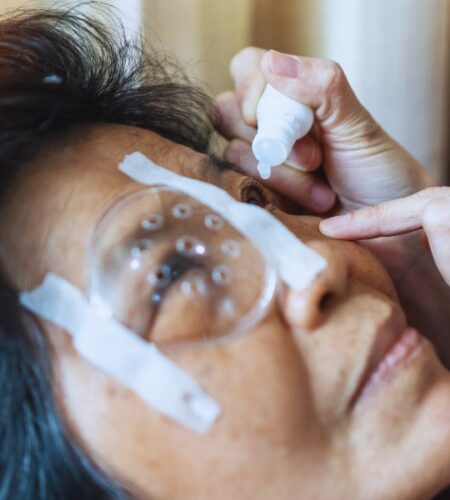Conjunctivitis Disease refers to an inflammation and reddening of the conjunctiva, which is the thin tissue layer covering the front of the eye (commonly known as pink eye).
Etiology of Conjunctivitis Disease:
There are various factors that can lead to conjunctivitis. These include:
- Bacterial or viral infections
- Allergic reactions to substances like dust or pollen
- Irritants such as shampoos or smoke
- Allergy to contact lenses
- Eye injury caused by foreign objects
- Tear duct blockage in newborns
Signs and Symptoms of Conjunctivitis Disease:
Conjunctivitis presents with a range of signs and symptoms, including:
- Redness in one or both eyes
- Itching sensation
- Excessive tearing
- Thick yellow discharge, especially after sleep
- Burning sensation in the eyes
- Blurred vision
- Sensitivity to light
Diagnostic Approaches for Conjunctivitis: Conjunctivitis can be diagnosed through the following methods:
- Visual examination of the eyes and assessment of symptoms
- Swab test, which may be recommended if the symptoms do not respond to treatment
Treatment Options for Conjunctivitis Disease:
The management of conjunctivitis involves various treatment modalities:
- Antibiotics prescribed for bacterial infections
- Eye drops or ointments
- Antihistamine medications
- Mast cell stabilizers
- Corticosteroids
Complications Associated with Conjunctivitis:
Conjunctivitis is generally a self-limiting condition. However, to reduce the risk of complications, a course of antibiotics is often administered.
Preventive Measures for Conjunctivitis: To prevent the occurrence of conjunctivitis, the following instructions should be followed:
- Maintain proper hygiene and practice frequent handwashing.
- Avoid touching the eyes with unwashed hands.
- Use clean towels and washcloths, avoiding sharing personal items with others.
- Change pillowcases regularly.
- Refrain from using eye cosmetics during conjunctivitis and avoid sharing them with others.
Nursing Interventions:
Nursing interventions play a crucial role in managing conjunctivitis. Some of the interventions include:
- Educating patients about proper handwashing techniques and the importance of keeping hands away from the eyes.
- Using disinfected materials for eye examinations.
- Encouraging patients to avoid sharing personal belongings with others.
- Applying warm compresses over the affected eye and administering prescribed eye drops and ointments.
- Instructing patients to clean eye discharge with tissue and dispose of it properly.
- Recommending the use of personal eye cosmetics and discouraging sharing.
- Teaching patients the correct technique for instilling eye drops or ointments without touching the container’s tip to the eye or lashes.
- Advising patients to stay away from school or other public settings for at least 7 days.
- Instructing patients to wear dark-tinted eyeglasses to reduce exposure to bright light and potential contamination.
- Providing guidance on the correct use and maintenance of contact lenses.
- Emphasizing the importance of avoiding rubbing or touching the eyes.
- Encouraging infected individuals to adhere to these preventive measures to minimize the spread of conjunctivitis to family members.
For further inquiries related to this topic, refer to the following questions:
- Conjunctivitis (Pinkeye): Causes, Symptoms, and Treatment
- Conjunctivitis: Causes, Symptoms, Treatments, and Prevention
- Conjunctivitis: Understanding Pink Eye
- What Is Conjunctivitis of the Eye?
- How Can You Contract Pink Eye?
- What Are the Modes of Transmission for Pink Eye?
- Conjunctivitis Defined
- What Causes Conjunctivitis?
